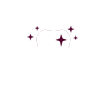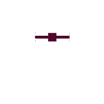During teenage years, life can be complicated as teenagers have to adapt to physical, mental and emotional maturity. As they become more independent, they should take steps to adopt a healthy lifestyle and ensure good health for the future. This includes looking after their teeth and gums for a healthy smile and fresh breath for life.
The main dental diseases are tooth decay (dental caries) and gum diseases (periodontal disease and gingivitis). There are some things that can be done to ensure that young people are not affected by these common conditions.
Tooth Decay
Tooth decay occurs when there is sugar in the diet. The bacteria that is present in everyone’s mouth and which form dental plaque, use the sugar to produce acids which damages teeth (decay). Tooth decay creates holes in the teeth and at its later stages can cause severe toothache and dental abscesses.
The most important way of preventing tooth decay is to restrict the amount of sugar in the diet. Sugary food and drink should be kept to a minimum. It is especially important to limit the number of sugary products taken every day, ideally only having them at meal times. Sugary snacks eaten between meals or just before going to sleep are particularly harmful.
Toothbrushing is also important to reduce the build-up of plaque that allows the bacteria to cause tooth decay. However, even effective tooth brushing will not prevent tooth decay if the intake of sugary food and drinks is still high. This is because bacteria can stick to teeth in areas which are inaccessible to normal tooth cleaning.
Fluoride is a naturally occurring substance. It helps prevent tooth decay by strengthening the tooth and making it more resistant to the acids produced by the bacteria. Fluoride is present in nearly all toothpastes and in some geographical areas the level of fluoride in the water is adjusted to prevent widespread tooth decay.
Gum Disease
Inflammation of the gums caused by bacteria found in dental plaque. After puberty gums will become more prone to gum disease (gingivitis). Gum disease can affect anyone at any time into adult life.
The main indicator of gum disease is bleeding from the gums (commonly seen after tooth brushing). Healthy gums will not bleed even after vigorous brushing. The gums may also become red and swollen and this may be an important cause of bad breath. The condition is usually painless.
At its early stages gum disease is completely reversible following simple treatment, including proper tooth cleaning. However, if gum disease persists then it can spread to cause damage to the supporting structures on the teeth, including the jawbone. Eventually the teeth will become loose, drift out of position and ultimately fall out. Gum disease is a very common cause of tooth loss in adults.
About 10 percent of adults are especially prone to a destructive form of gum disease (periodontitis) and it is particularly important that teeth are checked by a dentist from time to time. They will be able to pick up the first signs of disease. To prevent gum disease, it is essential that effective toothbrushing is regularly carried out. Teeth should be brushed at least twice a day for at least two minutes a time. It is important that all the surfaces of the teeth are cleaned, especially around the insides and the area where the teeth meet the gums.
Erosion
The wearing away of the tooth surface caused by acids found in fruit juices, fizzy drinks, sports drinks, citrus fruits and pickles. Stomach acids that enter the mouth, by reflux or vomiting, may also cause erosion. Eroded teeth are yellow, thinner and are more sensitive. In the long term, erosion can cause very severe tooth wear which is both uncomfortable and unsightly.
To help prevent erosion, limit the frequency of acidic drinks and foods. Teeth should not be brushed for at least 30 minutes after having an acidic drink. This is because the acid temporarily softens the surface of the teeth and brushing them straight away can make them wear away more quickly.
Orthodontic Treatment
This treatment is carried out in order to move teeth into a position that will improve their appearance and function. It is usually carried out during the teenage years as teeth and jaws undergo their final growth. Removable or fixed braces are placed on the teeth in order to move them and the process can take between 18 months and two years to complete. During this time regular visits to the orthodontist are made – every six to eight weeks.
While having orthodontic treatment it is essential that the teeth and braces are kept very clean as the braces will tend to encourage the formation of tooth decay and gum disease.
Wisdom Teeth
Wisdom teeth are the last teeth that grow at the back of the mouth and usually appear between the ages of 16 and 24 years. Some people do not have wisdom teeth. On occasions wisdom teeth can be painful and cause recurring infections, especially if there is not enough room for them in the mouth (impacted). It is sometimes necessary to have them removed.
Smoking
Smoking has a major effect on the likelihood of developing many diseases including heart disease and cancer. In the mouth, smoking causes staining of the teeth and bad breath, and increases the damage caused by gum disease. In the long term, it can also lead to throat or mouth cancer.
Quitting a smoking habit is always much more difficult than not starting in the first place. Smokers should seriously consider giving it up.
Visit the Dentist
Teenagers should have regular check-ups with a dentist who will be able to advise about all dental issues and detect any signs of developing disease. A dentist may on occasions refer to an orthodontist for orthodontic treatment and to a dental hygienist for preventative advice about diet, toothbrushing and treatment of gum problems.
 £
St. John's Wood
020 7722 0040
Aura Dental
£
St. John's Wood
020 7722 0040
Aura Dental
 I brought my 4-year-old and 2-year-old here. David and Nicole were so lovely and patient with them. The kids told me they love the dentist now!
I brought my 4-year-old and 2-year-old here. David and Nicole were so lovely and patient with them. The kids told me they love the dentist now! 





























